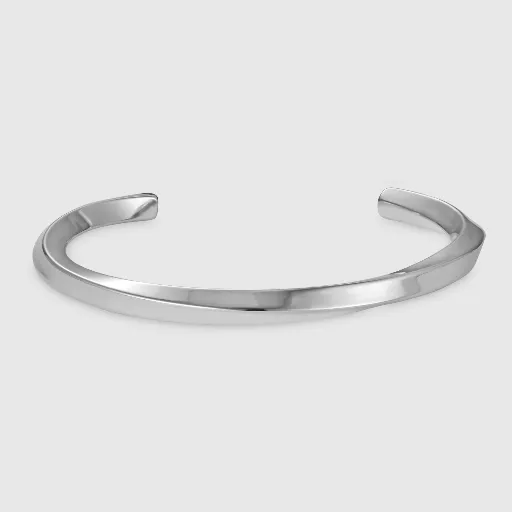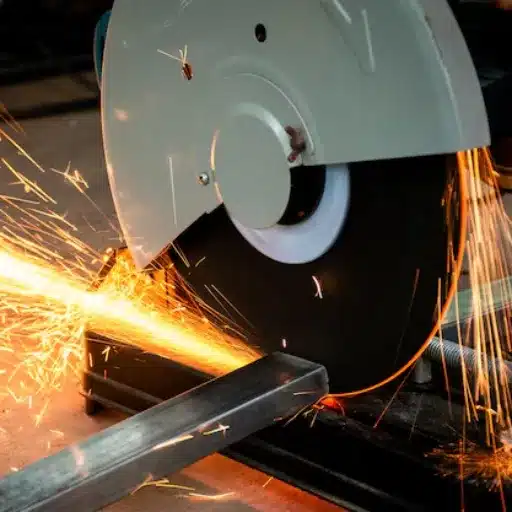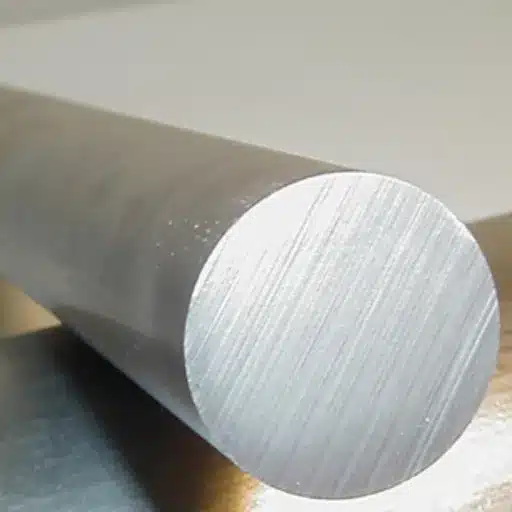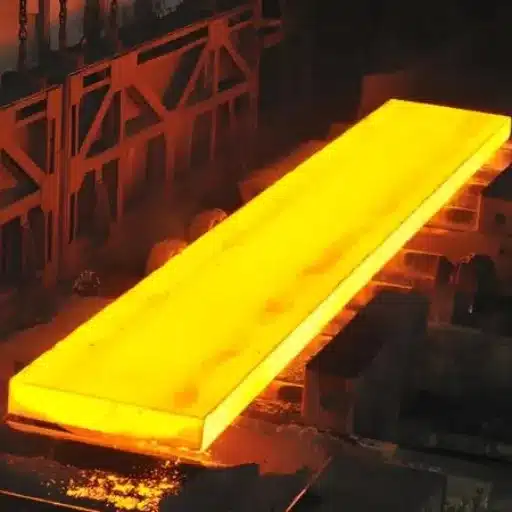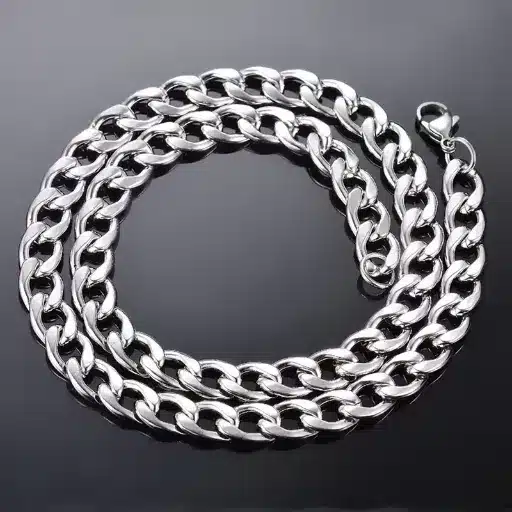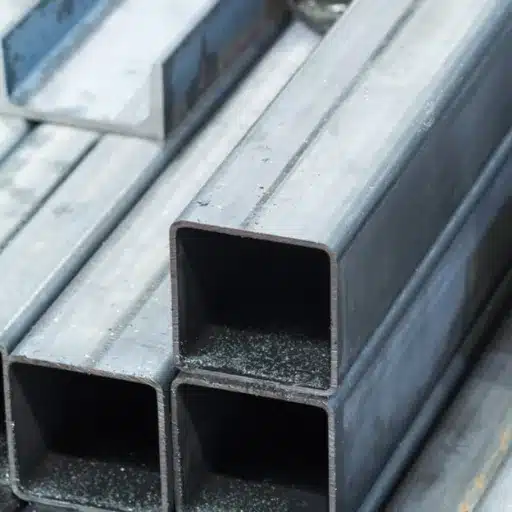In today’s world of modern manufacturing and innovative materials design, dual-phase (DP) steels represent a paradigm shift toward more resilient and flexible production systems. High-grade 980dp coils are among these materials and can be easily distinguished by their excellent mechanical properties, which are indispensable in industries such as automotive manufacturing, construction, and home appliances. However, why is this 980dp dual-phase steel different from other steels? This paper examines the material structure and its unique properties and explains the application of structures where they are most effective. The information provided in this blog post will be of interest to engineers, manufacturers, and connoisseurs of material designers alike, as it presents 980dp coils, highlighting their most significant properties and attributes. This blog post undertakes a breakdown of what this steel is all about, including its uses and advantages.
Introduction to 980dp Coils
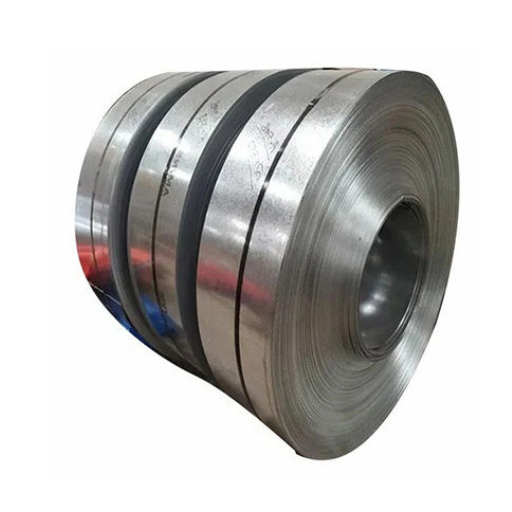
980DP coils are advanced-strength steels made by incorporating special steels used in structural applications that require a high strength-to-weight ratio. The number “980” indicates their mechanical property related to tensile strength i.e,. It’s eight hundred and ninety Newtons/square millimeter, or otherwise referred to as eight hundred and ninety Megapascals, within the metals strength Hero category. Due to these excellent properties, industries such as automotive require high-strength yet lightweight products, where weight reduction is a premium against any impending compromises in safety and durability. Due to these special structures, they provide an enhanced combination of formability, weldability, and wear resistance, thus making them highly suitable and commonly used for high-performance structural components.
What is Dual Phase Steel?
The ferritic-martensitic complex of high-strength steels is called dual-phase steel, made of martensite and ferrite phases, which have the great advantage of being able to absorb energy well without worrying about the material tearing easily, and is well-suited for use in automotive components.
Overview of 980dp
980dp coils are robust sheets of steel, composed of highly advanced technology in the steel materials processing, which strengthens these sheets to increase their tensile capacity. This is due to their minimum tensile stress, which is 980 MPa (megapascals). The dual-phase micromolecular state, apart from hard martensite, contributes to the tensile strength; hence, the steel can withstand loads, while the soft ferrite microstructure helps prevent any deformations. This structural combination can provide excellent stress relief and position while ensuring an adequate supply of energy.
There has been a recent improvement in metallurgy technology that further enhances the capability of 980DP. For example, this material can support a stress level of up to 550 MPa – 700 MPa, depending on the processing and heat treatment conditions. Its elongation behavior is typically within 10% to 20%, allowing for the production of complex shapes for body-in-white (BIW) parts. Additionally, due to its extremely high elongation, 980DP effectively increases energy absorption and mitigates crash forces to ensure that vehicular structures are designed safely.
During the heat treatment process, 980DP attains these meritorious mechanical properties by strategically conducting processes, such as carefully manipulating the oxidation and cooling process of steel. In most cases, it is galvanized during hot dip galvanization to play a more protective role against rust, primarily on the exterior automotive panels and the vehicle’s supporting structures. According to the new data, these have also helped refine transportation means due to their weight reduction capabilities for cars, thus increasing fuel efficiency while reducing emissions, making them environmentally friendly.
The impressive strength-to-weight ratio, enhanced welding effectiveness, and versatility in fabricating techniques make 980DP indispensable in contemporary high-energy design and construction. These types of steel are highly versatile and are primarily used in industries that require rugged and high-performance structural materials.
Applications of Dual-Phase Steel Coils
End User Applications of Dual Phase Steels / Dp Steel Coils
- Exterior and Underhood Applications
An instance where DP steels / DP steel coils are utilized exceedingly is the automotive field. Vehicle manufacturing utilizes DP steel in various body components due to its lightweight nature, which is combined with the stiffness of the car body shell, a group of zonal elements, and additional parts, including structural safety elements and energy-absorbing structures. If we take DP steels as an example, these steels can enable a 25% decrease in vehicle weight, leading to improved fuel efficiency without compromising safety.
- Building and construction structures
These types of steel coils are used in the construction arena for roof frameworks, structures, and reinforcement steel. They are also of use in building constructions due to their relative lightweight and excellent mechanical properties.
- Household Appliances Manufacturing.
One critical application of DP steels is the manufacture of domestic and industrial appliances, as these materials offer exceptional strength and durability to the products. They are typically used in devices such as washing machines, refrigerators, chillers, air conditioning units, and the like because bending strength and ease of shaping are key factors in these devices.
- Pipelines and intrinsic pipes
Dual-phase steels have high potential for use in the oil, gas, and water industries to produce pipes and tubing with enhanced strength. These steels can withstand high operating pressures and resist corrosion, giving them longevity in plastic piping systems and fitting applications.
- Agriculture and soil working machinery
In some machines, such as tractors, plows, and harvesters, the use of DP steel coils is appreciated in agriculture. The favorable steel-to-weight ratio ensures optimal performance and, at the same time, provides longevity for a machine when deployed in a heavy-duty environment.
With all these applications, DP steel coils are a necessity for most industries due to their excellent functionality and usefulness in modern-day engineering and manufacturing.
Chemical Composition of 980dp Coils
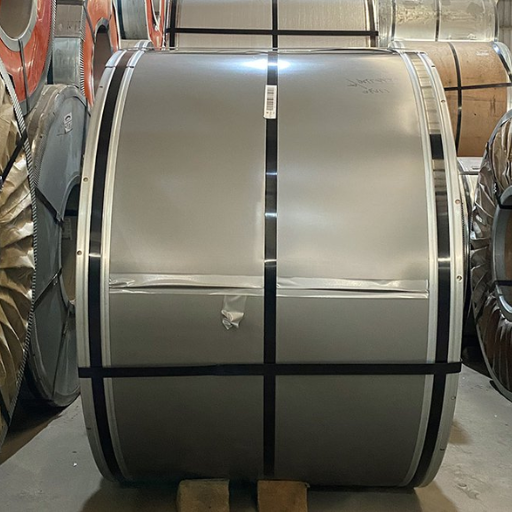
980dm steel coils are predominantly iron combined with other elements in a specific proportion to attain good strength and plasticity. The typical elemental composition includes:
- C- Carbon about 0.08-0.12 %- cases strength and hardness.
- Mn- Manganese about 1.5-2.0 % facilitating toughness and ductility.
- Si- Silicon is about 0.5 %, and it is employed to enhance both strength and rust control.
- P & S phosphorus and sulfur are normally less than 0.02 % as excess phosphorus content lowers the toughness of the material.
- Other Elements: Usually insignificant amounts of Cr, Mo and/or Nb may also be used to enhance wear resistance of a steel.
This alloy composition is engineered to ensure that the 980dp coils exhibit the anticipated performance required for respective application sectors, such as vehicles and building structures, with high strength, while also meeting the constraints imposed by ease of processing, resulting in minimal losses.
Elements in Dual-Phase Steel
Dual Phase (DP) steel, classified as an advanced high-strength steel (AHSS), is widely used in the manufacture of automobiles and structures due to its enhanced ductility, strength, and lightweight nature. DP steels consist mainly of two phases, and the elements forming these phases, along with their usual concentrations and their functions, are as follows:
- Carbon (C): in most cases, between 0.06 – 0.15%. These levels of carbon enhance the strength of steel, as more carbon translates into more martensite, one of the primary phases in DP steels. Importantly, however, the levels of carbon should not be too high to avoid weldability problems.
- Manganese (Mn): concentration is usually of the order of 1.5 – 2.0 %. Manganese contributes to the strengthening of steel through solid solution hardening, its alloying effect, and increases in hardenability, thereby enhancing the capacity to transform into martensite.
- Silicon (Si): content varies from 0.2% to 0.5%. Silicon is typically used as a deoxidizer during the steel-making stage, enhancing strength through solid solution strengthening.
- Phosphorous (P): is usually controlled to keep it below 0.02 %. Phosphorus acts as an impurity, although it does improve the strength up to certain limits. Higher levels of phosphorus will, however, impair ductility and toughness.
- Sulphur (S): its content is generally less than 0.01%. Sulfur is another furnace impurity and is controlled to prevent compromising steel toughness and weldability.
- Aluminum (Al): contents may vary between 0.01% and 0.08%. Aluminum is both a grain refining element and a deoxidizing agent, which enhances the tensile and impact properties of steel.
- Chromium (Cr): this should be kept under 1%. Chromium has excellent properties in terms of increasing tensile strength and corrosion resistance, making it a better option in extreme conditions.
- Molybdenum (Mo): content usually in the range of 0.2 to 0.5%. Other alloy that are used in steel adds strength as well as hardenability, mostly for parts of steel that require additional toughness due to their thickness.
- Niobium (Nb) and titanium (Ti): Together, do not exceed 0.1%. These are referred to as microalloying elements, which serve to reduce grain size, thereby increasing strength and making the material more high-strength.
These elements, adjusted in proper proportions, give Dual Phase steel its microstructure composed primarily of hard martensite uniformly distributed in soft ferrite matrix. Thanks to this structure, it exhibits superb strength as well as good elongation, which most component production companies desire, such as for frame structures of cars and, of course, high-speed impact zones.
Hence, let us propose the following hypothesis: Following the offer of higher prices for the previously committed hot-rolled 980dp coils, in order to conceal price differences on a deferred basis.
Example Chemical Composition of Dual Phase Steel (Example DP980):
| Element | Typical Range (%) |
|---|---|
| Carbon (C) | 0.10 – 0.15 |
| Manganese (Mn) | 1.5 – 2.0 |
| Silicon (Si) | 0.2 – 0.5 |
| Aluminum (Al) | 0.01 – 0.08 |
| Sulfur (S) | <0.01 |
| Phosphorus (P) | <0.02 |
| Chromium (Cr) | <1.0 |
| Molybdenum (Mo) | 0.2 – 0.5 |
The exhibited structural detailing in the design of honeycombs of the materials is bonded with a UC coating on the face sheet, and together, the system exhibits the potential to meet increased strength in high-temperature applications.
Based on this material, it has met expectations and qualified for modern engineering applications. This paper discusses the current thickness and development processes for Dual Phase, including coils with thicknesses less than 3/980dp in line thickness.
Impact of Chemical Composition on Properties
Dual-phase (DP) steel has great potential for utilization due to its chemical composition. Especially for high-precision drawings, dual-phase steels are therefore advantageous as each constituent element has the following effects:
- Manganese (Mn):
It increases the strength and hardenability of the steel in itself and also reduces wear. Ranging between 1.5% and 2.0%, this physicochemical balance ensures excellent tensile strength, allowing for thinning without fracture, despite the high strength.
- Silicon (Si):
It has a role in cleaning or deoxidizing and helps in strengthening. At 0.2-0.5%, it plays a role in increasing the toughness of the steel while mitigating brittleness.
- Aluminum (Al):
Acts as a deoxidizing element and a grain refiner. Its presence within the range of 0.01 – 0.08% allows for a significant improvement in the strength and surface quality of the steel.
- Sulfur (S):
Retained at very low levels of <0.01% so that the steel is not compromised in terms of impact toughness and ductility. Too much sulfur results in brittleness and instability.
- Chromium (Cr):
Contributes in increasing the resistance against corrosion as well as the strength of the steel. At less than 1.0%, its content provides a compromise between good performance and minimal embrittlement of steel.
These specific chemical ranges ensure that the mechanical properties of dual-phase steel, such as strength, ductility, and formability, are well balanced, making it applicable in many industries.
Comparison with Other Steel Grades
| Parameter | 980DP Steel Coils | Other Steel Grades |
|---|---|---|
| Strength (MPa) | Yield: 550-980, Tensile: ≥980 | Varies (e.g., HSLA: 420-700) |
| Formability | Varies, depending on coating | Varies, often lower in martensitic |
| Elongation (%) | 10-14 | Varies, typically lower in HSLA |
| Corrosion Resistance | Enhanced with coatings (GI, GA, ZA) | Varies, depends on coating |
| Applications | Automotive safety, structural parts | General construction, machinery |
| Thickness Range (mm) | 0.5-3.0 | Varies, often broader |
| Weldability | Excellent | Varies, martensitic less weldable |
| Cost | Moderate, high-performance steel | Lower for basic grades |
| Microstructure | Ferrite + Martensite | Varies (e.g., single-phase ferrite) |
| Work Hardening | High initial rate | Lower in HSLA and basic steels |
Mechanical Properties of 980dp Coils
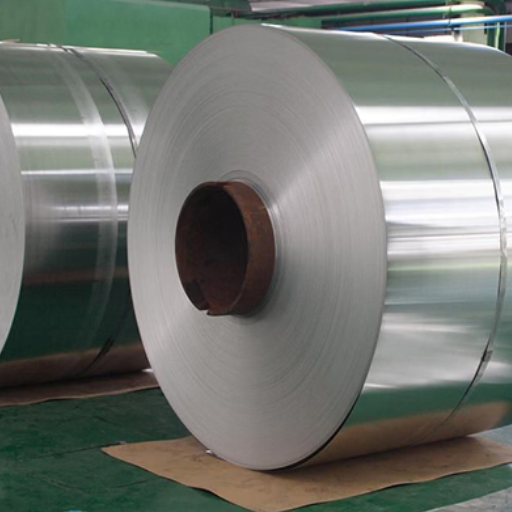
Coils are used to manufacture various equipment and mechanisms, and 980dp coils, to a large extent, are characterized by a high balance of strength and ductility. The following are the most relevant characteristics of these coils:
- Tensile strength. Such an ability to bear loads without breaking is approximately assessed to be around 980 MPa.
- Yield Strength: A value of more than 550 MPa is usually encountered and will have less deformation and stress.
- Elongation: The rates of stretching are moderate; thus, the product will be formed to a considerable degree.
Consequently, these 980dp coils find use in fields such as the automobile industry, where the interplay between the characteristics of strength and ductility governs the safety and structure of the elements.
Yield Strength Characteristics
Under stress-induced pressures, one of the common causes of failure is premature deformation, which is often attributed to the low yield strength of the material used. The following five characteristics and figures of the material are studied to determine its yield strength:
- High Yield Stress Limit: On average, such stresses are well above 550 MPa, ensuring that the material can resist significant deformation.
- Consistent Performance Across Thicknesses: Regardless of the material’s thickness, its yield strength remains unchanged, ensuring the material’s dependability.
- Thermal Stability: Even with the rising temperatures, the material strength remains unharmed, making it ideal for applications where heat is inevitable.
- Work Hardening Capabilities: In forming processes, the yield strength is increased to improve the durability of the product.
- Resistance to Fatigue Failure: Due to its high yield strength, the material exhibits significant resistance to fatigue, allowing it to withstand numerous load cycles over an extended period.
Tensile Strength and Ductility
Tensile and ductility are fundamental properties of a material as far as they are concerned with invariant deformation and breakage. The two properties in equilibrium provide good performance for a wide range of uses, intermediate cross-sections, and application conditions. Some of the key information on the tensile strength and the ductility is as follows:
- Ability to withstand high forces – This material has a maximum resistance to tensile force of 600 MPa, allowing slabs to resist high loads.
- The maximum strain before breakage: This ensures that the article can be shaped comfortably, as the elongation is as high as 20% before failure.
- Uplifting of strength and flexibility – The ratio of tensile strength of materials to ductility of materials is reasonable. Therefore, materials can be very stressed without total damage in the case of multi-loaded situations.
- Application of Principles – The material can endure steady and paranoid, and often, regular features will fit primarily to use in a dynamic task that involves the combination of flex and durability.
- Diversity in Temperature – The mechanical properties, such as tensile strength and ductility, remain unchanged when the temperature is varied; hence, the material exhibits significant flexibility in use under stiff environmental conditions.
Advanced High-Strength Steel Features
- The tensile strength of advanced high-strength steel (AHSS) that is usually between 600 and 1,500 megapascal means that the material is used mainly in areas where strength and elastically will not be enough.
- Equally, despite its high strength, the advanced high-strength steel still retains solid formability, allowing one to create complex-shaped members without concern that they will collapse.
- Insert the Strength of Advanced high-strength steels (ASHSS) in this case: ASHSS possesses features that enable effective absorption of energy (forces) in the event of an accident to increase “crash-worthiness.”
- Corrosion Protection: In many types of AHSS, coatings (also called barriers) that include chromium or chromium and nickel are applied to prevent the AHSS from corroding rapidly in unfriendly environments.
- The desirability of Light Weight: Its ability to support a great deal of weight for such a small area means that the components can be made thin without affecting their purpose, and in industries like vehicle production, this translates to considerable weight reduction.
Manufacturing Processes of Cold Rolled Dual Phase Steel
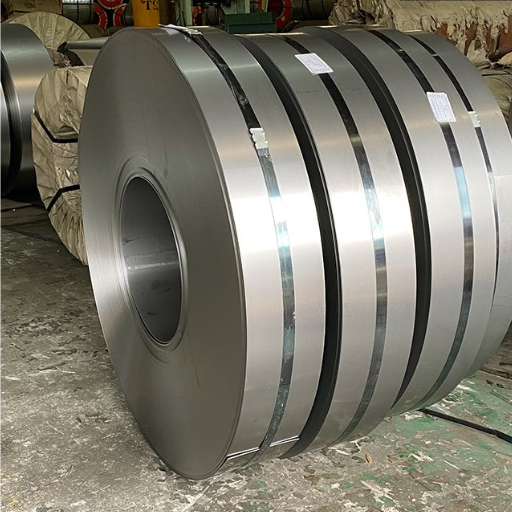
| Process Step | Key Points |
|---|---|
| Steelmaking | High-quality raw materials refinement |
| Hot Rolling | Reduce thickness at high temperatures |
| Pickling | Remove scale from hot-rolled steel |
| Cold Rolling | Further thickness reduction, smooth finish |
| Annealing | Create dual-phase microstructure |
| Rapid Cooling | Form martensite and ferrite phases |
| Coating (Optional) | Apply GI, GA, or ZA for protection |
| Cutting/Slitting | Customize dimensions for applications |
| Quality Inspection | Ensure mechanical and surface properties |
Cold Rolling Techniques
It is a method of rolling the steel at through the kraft paper rolling mills in cold operable condition, that is, keeping steel at room temperature and then compressing one or both top bottoms of steel. This compression process yields flat steel that is thinner, exhibits better surface characteristics, and possesses superior mechanical properties, among other benefits, making it ideal for high-performance applications.
Tolerance Levels in Production
Discussing the levels of tolerance in the manufacturing process of cold-rolled phase steel is significant because the precision and quality of the material used in its manufacture are exceptional. This is due to its tight tolerance levels, which are imperative in industries like automotive and aeronautics, as these are very sensitive to the consistency of output and delivery of performance. Today’s high-scale production systems have the capability of achieving thickness dimensions of as low as ±0.01 mm while the width can be produced with deviations as little as ±0.2%.
The development of specific measurement and control systems related to tolerances ensured the highest degree of accuracy and reliability in these tolerance levels. Take, for example, most cold rolling processes, which utilize a gauge control system or a laser for precise measurement of dimensions or surface texture. As a result, this contributes to a reduction in wastage, ease of manufacturability, and increased efficiency in the part’s durability.
Recently, it has been reported that the global cold-rolled steel market has witnessed growth in the utilization of monitoring systems to test rigorous adherence to the cuticle. As a result, the product variations are significantly reduced whilst there is an assurance of meeting the set international norms viz. ASTM A1011, EN 10149-2, amongst others. These applicable standards demonstrate that even slight variations in tolerances can lead to deterioration in the quality of dual-phase steel, ultimately failing to meet the engineering tasks of today.
Quality Control Measures
To produce top-notch cold rolled steel, often controlled by stringent criteria that achieve the set standards, a multitude of quality checks are part of the manufacturing process. Some of them are –
Checking the Dimensions
The thickness and width of the produced steel is constantly checked within 0.5% tolerance. There is a cut-off point for tool-aided changes, where there is no deviation from the thickness and width specifications, coupled with a tolerance level of ±0.5% at most.
Inspection of the Surface of Rolled Metal
Sophisticated equipment is used to detect any surface defects, including scratches, dimples, or foreign particles. In turn, a smooth finish is achieved that is free of any functional or aesthetic imperfections.
Examination of the Make-Up
Spectrometers are used during the production process to frequently ascertain the steel’s composition and verify whether it is within the acceptable range defined by standards such as ASTM A1011. The key elements are carbon, manganese, and silicon contents.
Physical Tests
Finally, samples of the material are evaluated for tensile of core metals, modulus of resistance, and elongation. This is performed to establish the corresponding level of conformity, such as for the strength values of the 980dp coils dual-phase steels, in conformance with EN 10149-2.
Listening to the Twist
All the actors are directed at all times in order to deliver a credible performance. Therefore, the discordance of properties such as hardness or toughness in the finished product is averted.
Applications and Benefits of Using 980dp Coils
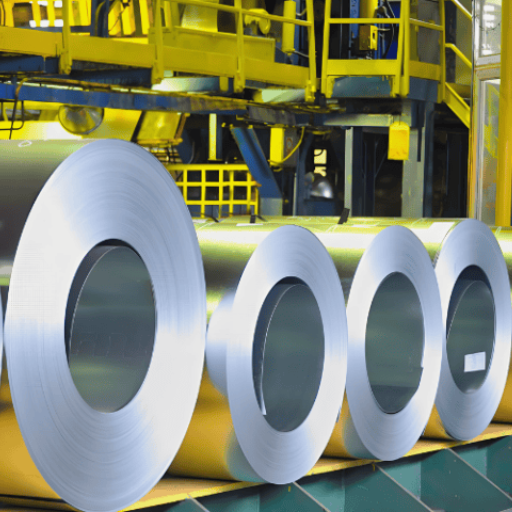
| Category | Key Points |
|---|---|
| Applications | |
| Automotive Body Parts | Door panels, fenders, roof rails |
| Chassis Components | Cross members, side rails, reinforcements |
| Crash-Resistant Parts | Bumpers, door beams, impact zones |
| Suspension Components | Suspension arms, high-stress parts |
| Structural Components | A-pillars, B-pillars, safety beams |
| Benefits | |
| High Strength | Yield strength up to 980 MPa |
| Good Formability | Enables complex shapes and designs |
| Lightweight Design | Reduces vehicle weight, improves efficiency |
| Crash Resistance | Enhances vehicle safety in collisions |
| Corrosion Resistance | Coatings like GI, GA, ZA available |
| Weldability | Excellent for automotive manufacturing |
| Cost Efficiency | Combines strength and formability affordably |
Use in Automotive Industry
For instance, automobile designs have undergone enhancements in safety and performance due to the 980dp coils used in their design. In my opinion, these enhanced high-strength steel grades are ideal for producing lightweight and resilient components, such as structural reinforcements and crash-resistant components. It allows for the minimization of weight without compromising strength, thereby promoting better fuel economy and reduced pollution, which aligns with current industrial objectives.
Advantages Over Traditional Steel Plates
| Parameter | 980DP Coils | Traditional Steel Plates |
|---|---|---|
| Strength | High tensile strength (≥980 MPa) | Lower tensile strength |
| Formability | Excellent for complex shapes | Limited formability |
| Weight Reduction | Enables lightweight designs | Heavier for similar strength |
| Crash Resistance | Superior energy absorption | Lower impact resistance |
| Corrosion Resistance | Enhanced with coatings (GI, GA, ZA) | Requires additional treatments |
| Weldability | Excellent for automotive applications | Varies, often less reliable |
| Work Hardening | High initial work hardening rate | Lower work hardening |
| Cost Efficiency | Combines strength and formability affordably | Higher cost for similar performance |
| Durability | Longer lifespan in harsh conditions | Shorter lifespan |
| Applications | Ideal for automotive safety components | Limited to basic structural uses |
Future Trends in Dual-Phase Steel Usage
- Design Modifications and Improvement
With increasing emphasis on energy conservation and transportation decarbonization, the future outlook entails increased incorporation of dual-phase steel in vehicles to cut down on weight. It is claimed that a ten percent weight reduction can lead to a six percent to eight percent, and possibly more, improvement in fuel economy without compromising the rigidity and durability of the vehicles in question.
- Application in EV’s
The proliferation of electric vehicles necessitates the use of dual-phase steel materials in the manufacturing of battery boxes and chassis parts. This material enables the production of lightweight structures that facilitate the optimization of battery energy while incorporating the necessary crash-resistant design to enhance safety.
- Automation & Additive Manufacturing
The production processes have improved with the inclusion of automatic technologies and even additive manufacturing, which have made deployment of dual-phase steel; flexible. Its ease of use in current production methods minimizes wastage and optimizes both the forming process and cost.
- Third Generation Steels
Attempts to improve the beneficial properties of second-generation steels and enhance the strength-to-weight properties of third-generation steels also focus on the design of dual-phase steels. These changes are poised to break the existing boundaries in terms of materials, especially in the fields of Aerospace and Automotive.
- Other Industries
Although mostly used in the automotive industry, dual-phase steel is becoming a common feature in the construction, rail, and defense industries. This is due to its characteristics of formability, coupled with strength, which enable lightweight construction materials that are durable for these applications.
References
- AHSS Guidelines (Version 6.0)
- AHSS Guidelines V on Academia.edu
This document provides comprehensive guidelines on the applications of Advanced High-Strength Steels (AHSS), including DP980.
- AHSS Guidelines V on Academia.edu
- 3rd Generation Steels – AHSS Insights
- AHSS Insights
This source discusses the properties and formability of DP980 steel, as well as other advanced steel grades.
- AHSS Insights
- Developments and Outlook of Automotive Sheet Steels
- AIST PDF
This paper explores the developments in automotive sheet steels, including the production and properties of 980DP steel.
- AIST PDF
Frequently Asked Questions (FAQ)
What are the mechanical properties of 980dp coils?
980dp coils are known for their advanced high-strength steel properties, which include high tensile strength and excellent yield strength. These coils exhibit a unique microstructure comprising ferrite and martensite, which provides them with good formability and high work-hardening capabilities, making them suitable for various automotive applications.
How does the chemical composition of 980dp coils affect their performance?
The chemical composition of 980DP coils typically includes elements such as carbon, manganese, and silicon, which contribute to their strength and durability. The right balance of these elements ensures that the coils maintain high corrosion resistance and excellent weldability, making them ideal for structural parts in the automotive industry.
What is the significance of yield strength in 980dp coils?
Yield strength is a critical property of 980dp coils as it defines the stress at which the material begins to deform plastically. High yield strength in these coils ensures that they can withstand significant loads without permanent deformation, making them essential for safety components and anti-collision structures in vehicles.
How does TM-2011 relate to 980dp coils?
TM-2011 is a specification that outlines the requirements for advanced high-strength steels, including 980dp coils. Adhering to TM-2011 ensures that the coils meet the necessary mechanical properties and performance standards required for automotive manufacturing and other high-performance applications.
What is the weldability of 980dp coils?
980DP coils exhibit good weldability due to their unique microstructure, which enables welding using various techniques without compromising their strength. This property is crucial for creating strong joints in structural components and safety features used in automotive applications.
What are the applications of 980dp coils in various industries?
980dp coils are primarily used in the automotive industry for manufacturing safety parts, reinforcement structures, and energy-absorbing components. Their high strength and excellent formability make them suitable for applications requiring lightweight yet durable materials, such as in the production of automotive chassis and body panels.
How do the mechanical properties of 980dp coils contribute to their formability?
The mechanical properties of 980dp coils, including high tensile strength and low yield ratio, enhance their formability. This allows manufacturers to shape the coils into complex geometries without sacrificing structural integrity, making them ideal for various applications in automotive manufacturing.
What is the importance of high work hardening in 980dp coils?
High work hardening in 980dp coils ensures that the material becomes stronger as it is deformed. This property is particularly beneficial in automotive applications where components undergo significant stress and strain, enhancing their performance and longevity in safety-critical areas.
How does the surface finish of 980dp coils affect their performance?
The surface finish of 980dp coils plays a vital role in their performance, particularly in terms of corrosion resistance and adhesion during coating processes. A well-finished surface can improve the durability of the coils and enhance their aesthetic appeal in automotive applications.

